101 – Saint Bernards of Stoan and Lasqueti Island with Joan Zielinski
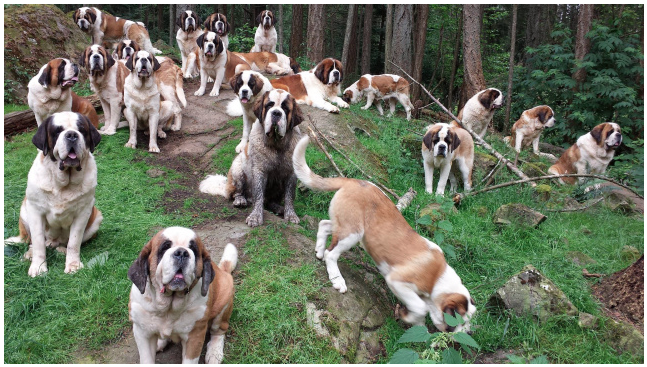
Saint Bernards of Lasqueti Island – Stoan Saint Bernards with Joan Zielinski
Joan Zielinski, AKC Judge and Breeder of Merit, and Breeder of Stoans Saint Bernards, speaks with Laura Reeves about raising Saint Bernards.
Saint Bernards from the Stoan Perspective by Stan Zielinski
Available through Alpine Publications, Stan Zielinski discusses Saint Bernard puppies, faults, temperament, movement, size, conformation, and just about every aspect of Saint structure.
Saint Bernards of Lasqueti Island
The Saint Bernards of Lasqueti Island, British Columbia, bred by Tikki Smith, are mentioned by Joan Zielinski, in her podcast, as she describes the famous Saint Bernards of Sanctuary Woods bred by the legendary Bea Knight. So we caught up with Tikki Smith and professional handler, Marty Glover, to talk about what makes these dogs unique.
Pure Dog Talk:
Provide some background of your introduction to the breed, why you chose Saint Bernards and what brought you to where you are today.
Saint Bernards Lasqueti Island – Tikki Smith:
I got my first St Bernard when I was 16 years old. I had no previous purebred dog experience. I just wanted a large dog and was interested in a Newfoundland or a St Bernard.
There happened to be a St Bernard breeder not to far from me so I went and visited the kennel and fell in love with the breed. I had never seen a Saint in the fur till then. I waited for over a year for a puppy and after no puppies because available I was offered a young female that was “show quality” and the breeder’s said I could have her if I would co-own her, and raise and share a litter with them.
At that point I would have probably agreed to anything! She had a litter of 10 puppies and I kept two. Then 6 months later the breeders invited me and my two puppies along to the 1997 National Specialty Show held in Colorado. I went and was introduced to showing and the purebred world. I have never looked back since!!
PDT:
Give us an idea of the set up and daily life of your dogs.
Tikki:
Now, 20 years since my first litter of Saint puppies, I have my very own kennel to be proud of.
I generally keep around 35 Saints. I have 5 acres of rough terrain fenced for them to run and play in. They also have a 60ft x 20ft kennel building beside our house. The kennel has 7, 20ft x 8ft fully covered runs each with indoor/outdoor area and self-water dishes. The Saints generally only use the kennel area for sleeping in or if I am out.
Their daily routine starts in the morning when I let everyone out and clean their runs. If anyone is in season they are of course left in the kennel but otherwise males and females and puppies 4+ month old run together while I am home. If I go out I will kennel up three quarters of them for safety while I am out. Then when I get home I let them out again.
At night I bring in 6 Saints per kennel in no particular order and they all eat together. I lock them in for the night to minimize nocturnal barking and also to keep them out of the rain at night especially in the winter months.
I have a separate puppy house and large fenced area for raising puppies up to 4 months of age after which point they join the group. The Saints have full view of our home and comings and goings of the family, yard and driveway. They are a part of the family and I often take them for walks in their huge fences in area. They love to follow me wherever I go!
PDT:
Your breeding, whelping and rearing protocols are both ancient and revolutionary in today’s world. Can you describe the process, methods, goals and results?
Tikki:
A bit about rearing. Because of my rural location, with a 1 hour ferry crossing only available 5 days a week with a limited number of crossing (2 or 3 a day when weather is permitting), I have had to (with the help of my vet) learn how to take care of most emergency situations the best I can.
This also means I do not take great measures to get my bitches pregnant. If they can’t conceive naturally then she just doesn’t have puppies. Also getting a c-section is difficult with our location so if a bitch needs a c-section then I do not breed that bitch again. I never schedule a c-section for singletons which have a high risk for being stillborns. It’s hard loosing puppies, but I remind myself that too much intervention can eventually lead to a breed who needs help in what should be a natural process.
Once the puppies are born I do everything I can to save all the puppies. Most important for newborns is to keep them warm and dry and well fed and make sure Mum doesn’t accidentally sit on them. Since my Saints are raised in a group environment, they often come in season at the same time which leads to litters being born around the same time. When this happens my bitches share each others’ litters.
I sleep right beside my new moms and litters and let them do as much of the natural mothering instincts as possible. I offer supplemental feedings and rotate puppies if it’s a large litter but I always work closely with each mother so she can raise her litter successfully.
I breed litters for myself which means I am breeding to keep a puppy or two from each litter to continue on in the next generation. My goal is to improve on each generation and as long as I see progress, I feel it was a success.
PDT:
Specifically can you talk about the relationship between the free ranging pack environment in which the dogs live and their structural health and longevity?
Tikki:
My Saints seem to benefit greatly from their natural environment and seem to be able to adjust quickly to new situations and environmental changes like going to a dog show. My Saints are raised with plenty of outdoor time in a very stimulating group environment which gives them a well rounded calm attitude. I spend lots of time with them and take the lead roll so they all look up to me and respect their human for guidance and understanding. This seems to provide a strong foundation for future bonding with other people or families. If I ever place one of my adult I am always amazed how quickly they adjust to a completely different home environment with relative ease.
I have always raised my Saints in the same environment so it’s hard form me to know exactly how they would development in a different environment. I have however seen very different expected outcomes from puppies I have bred but not raised. Sometimes the difference is so shocking it’s unbelievable!
This has led me to believe that environment plays a HUGE roll in their ability to reach their full potential, physically and emotionally. For example here I never see cow-hocked puppies, ever! I do see it though in puppies I have bred but not raised especially if those puppy’s are raised as couch potatoes living inside with non or hardly any outdoor time.
If puppies are fed puppy food this also seems to add to the issue. I always feed my puppies adult food from day one. I strongly believe Saint Bernard puppies should spend as much time as possible outside on good solid footing with plenty of exercise for the first year of their life to see them reach their full potential.
PDT:
Your thoughts on line breeding vs outcrossing?
Tikki:
I have never bred to a complete outcross. If I am going to work with an outcross, I prefer the dog to at most to be a half or better a quarter outcross himself. I prefer to stick with the bloodlines I am familiar with and believe line breeding is the only way to build a bloodline that can reproduce itself consistently. My goal for each litter is to improve on each generation. My goal for my breeding program is to create a strong foundation of healthy, sound, good moving dogs with excellent temperaments in a bloodline not just in one individual dog. I wanted to create a strong foundation behind my dogs, not just the next big winner. Basically I wanted a great dog with a pedigree!!! This meant I had to spend 4 or 5 generation just building up a strong pedigree and avoiding out crossing here or there or breeding to the next big winner in hopes of just getting one outstanding puppy.
PDT:
Marty, as a handler, what unique attributes (temperament, physical soundness, etc) do the Lasquite dogs bring you vs dogs bred/whelped/raised in a more “traditional” modern environment.
Am GCh Lasquite’s Denver v Lucas going Best of Breed at the 2012 SBCA National. He has 11 BOB wins and a Group 3rd.
Marty Glover – Professional Handler:
Tikki and I usually bring older dogs, 2-5 years old, off the island and show. The outside environment that the island provides gives the saints every thing they need to grow up sound and correct in muscle and conditioning. A Saint Bernard should be athletic and well built. The terrain on the island provides that. I’ve never seen a hocky or out of condition Saint on the island. As a saint puppy grows, the island life of woods, massive rocks and romping through forests are key in developing a big, sturdy working dog. This enables them, as adults, to perform the functions of their breed.
PDT:
Can you compare the Lasquite dogs in development to those of the legendary Bea Knight of Sanctuary Woods fame?
Marty:
Sanctuary woods was before my time in this wonderful breed. I have gone through countless pictures and even some videos of the kennel. Big kennels don’t really exist today. Lasquite and Sanctuary Woods are very similar in the fact of surroundings and breeding from your gene pool. You can look at any Sanctuary Woods pictures and Lasquite and you defiantly recognize “the look.” I often call it free range lol. I think it’s best the dogs all live in harmony and get along. After all, that’s the true temperament of what a Saint Bernard should be .
PDT:
What recommendations would you offer other breeders of giant breeds who aren’t blessed with the unique environment provided by Lasquite Island. Not all of us have an island preserve at our disposal! lol What lessons can we apply in other settings?
Marty:
I strongly urge anyone with Saint puppies, that the outdoor environment is best. Raising a big working dog like a Saint in the house, on slick floors is the worst thing you can do.
I’m a firm believer all puppies and young adults are outside. Also, we need to let our puppies be part of the gang and hang with adults and other puppies. When raised with a group they discover their pecking order and where they fit.
Our Valued Corporate Sponsors:
Our Esteemed Advertisers:
Our In-Kind Supporters:
KNOWLEDGE IS POWER — FRANCIS BACON
When you become a patron of Pure Dog Talk you’ll tap into an exclusive community of experts to help you and your dog be blue-ribbon best at whatever you do with your purebred dog! Your support helps keep the MP3's rolling at Pure Dog Talk!
As a supporter, you’ll immediately gain access to the weekly Pure Pep Talk SMS, Pure Pep Talk private Facebook group, and priority emails. Patrons can choose to level up to the After Dark Zoom and a Patrons Digital Badge for their website— even a private counseling session with Laura on any topic.

DON'T MISS AN EPISODE!!


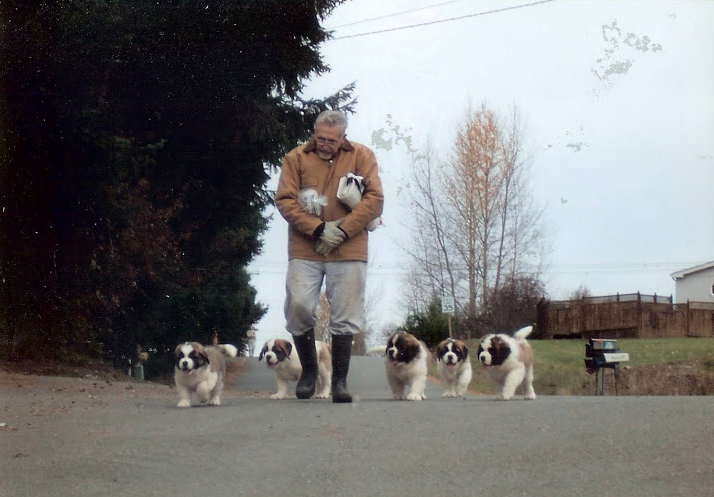
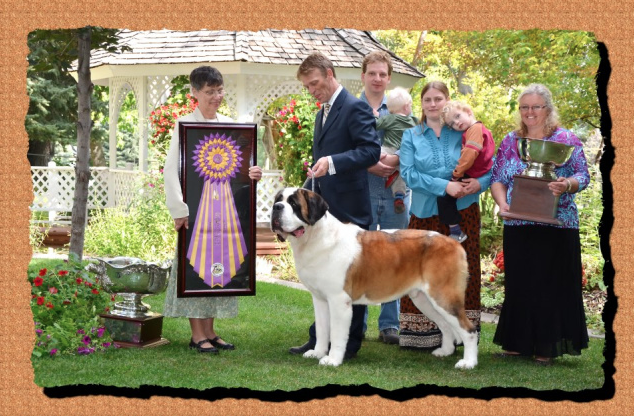




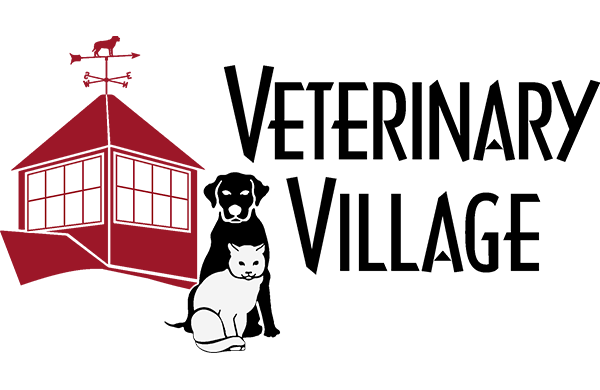




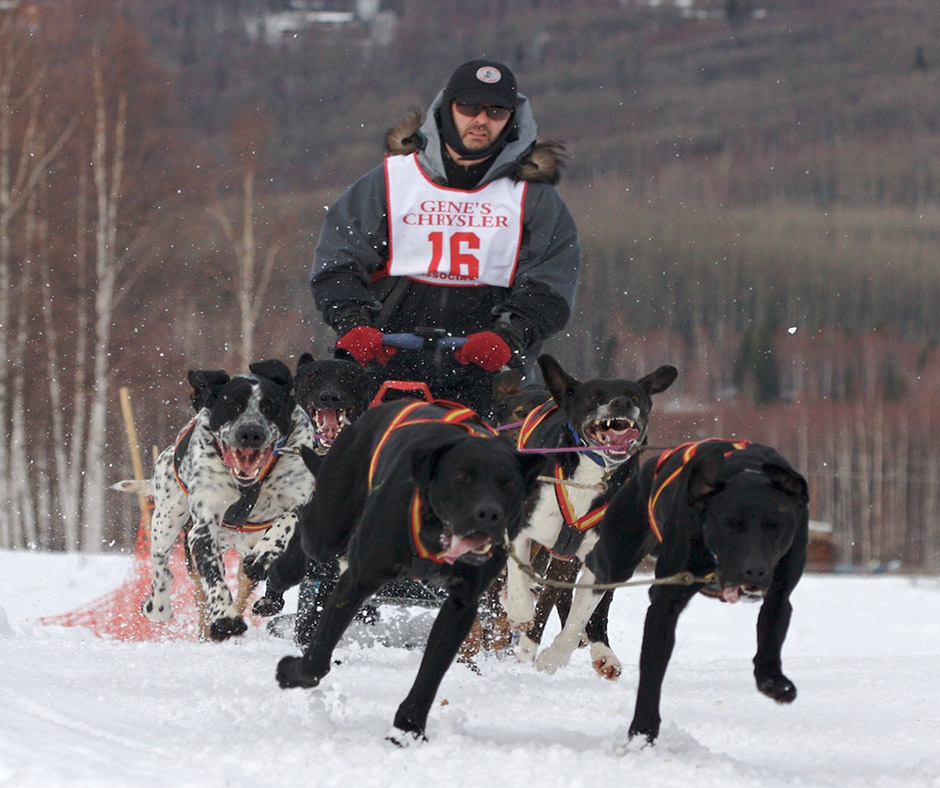
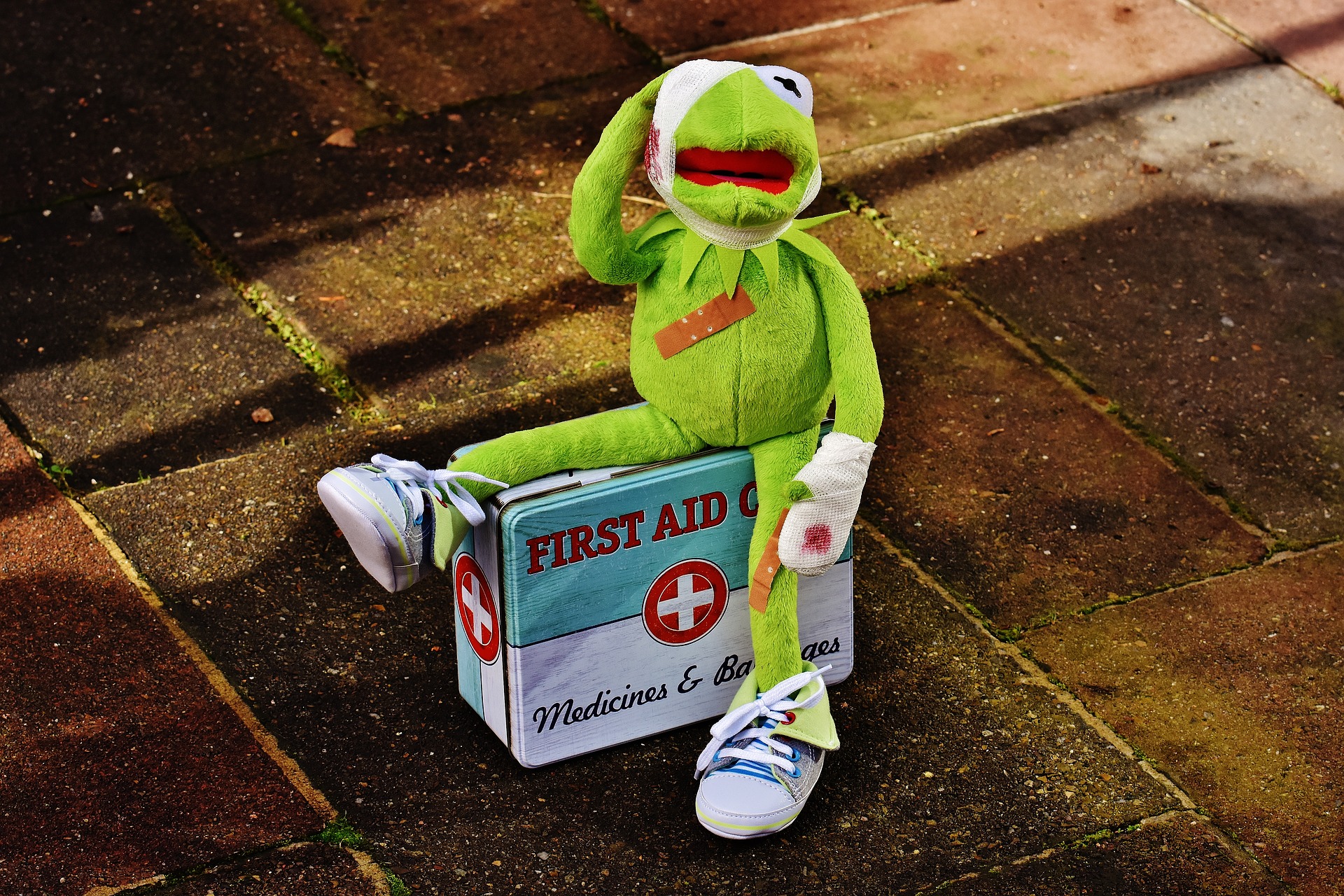
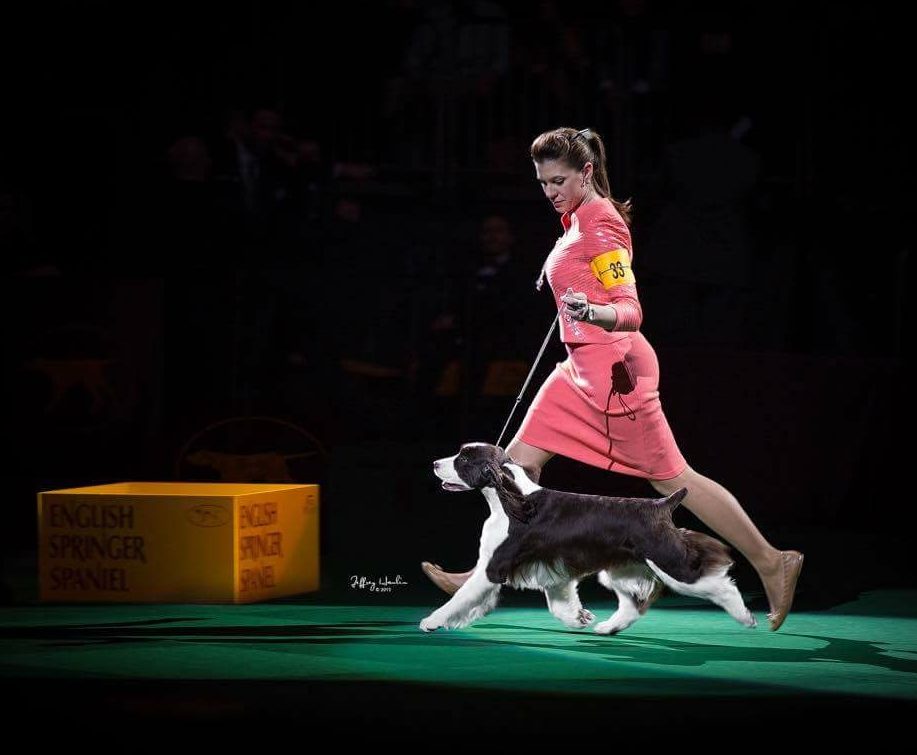
What a wonderful article on our very much lived Saint Bernards. I had Saints from Bea Knights wonderful dogs and I wish more people raising this wonderful breed had the same kind of set up for their dogs. It is so refreshing to see and know there are still those wonderful attributes. I have seen some of the dogs belonging to both Tikki and Marty and they are beautiful smart and very kind like Saints are supposed to be
I was raised on Smith River near Sanctuary Woods Kennels and knew Bea all my life. Her granddaughter was my best friend and we played and worked down there from 1957 until we graduated high school. I showed Bea’s Saints all over as a teenager and somehow no other breed measures up. In 1 second I can evaluate a Saint and when I saw your Denver v Lucas I could see the best of the breed. Bea had so many beautiful Saints and eventually Newfoundlands and Papillons and worked diligently to improve each breed, but Saints were her passion. Before returning to Oregon Bea was living in Southern California and was deathly ill so she came back to her family’s home land area to die. But she defied the doctor’s prediction and lived many more decades. I have many joyous memories of Bea and the dogs. Gulliver was her great love but they all loved her as much as she loved them. She wanted me to be a dog show judge but I went on to manage a Federal Court and only after retirement did I return to the country here where I was raised. She gave me 2 of her Saints (and a horse!) for working tirelessly to relocate them during the 45,000 acre Oxbow Burn near the kennels. So nice to see you carrying on the work she began all those years ago.